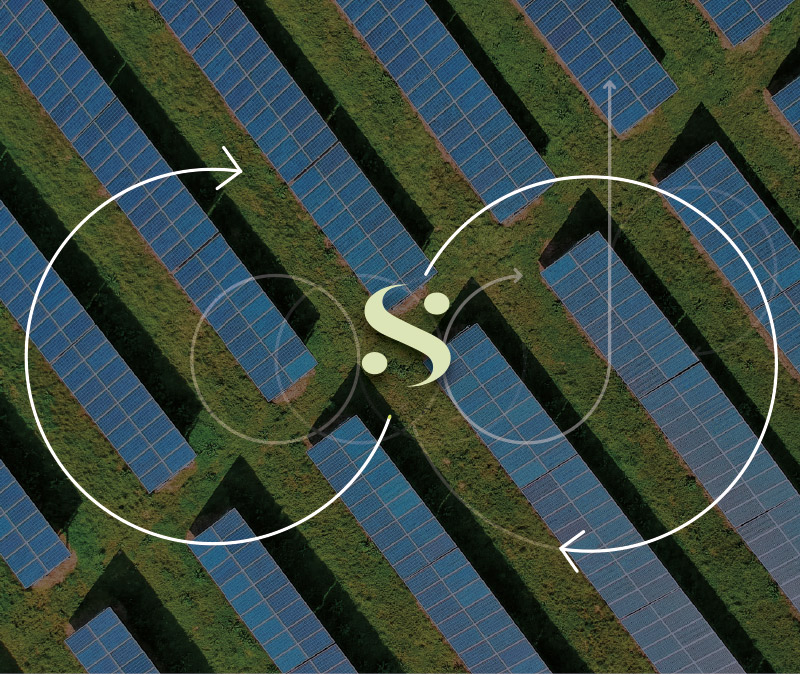The concept of CCS – Contamination Control Strategy is defined in the Annex 1 glossary (not present in the previous version) as:
“A planned set of controls for microorganisms, endotoxins/pyrogens, and particles, derived from the current understanding of the product and the process, ensuring both process performance and product quality. The controls may include parameters and attributes related to the active substance, excipients, materials and components of the pharmaceutical product, operational conditions of the plant and equipment, in-process controls, finished product specifications, and related methods and frequencies of monitoring and control.”
The CCS concept permeates the entire Annex 1 document (sometimes specifically, other times in a cross-cutting manner) and is a fundamental principle. It is mentioned multiple times and indicates examples and topics that need to be addressed.
It can be a single document (quite extensive) or a collection of documents, procedures, assessments, rationales, and/or references to them; we could call it a CCS dossier.
Therefore, it is a strategy that needs to be implemented throughout the production structure to define all critical control points and evaluate the effectiveness of the implemented controls and monitoring measures used to manage risks to the quality and safety of medicines. The implemented (or to be implemented) controls will depend not only on design (Quality by Design) but also on procedural steps, technical solutions, and organizational aspects.
To compose the CCS dossier, it is necessary to have knowledge of the product (competence in it), the process to obtain it, and the contamination risks related to manufacturing (in order to prevent/avoid them). In effect, the CCS document set is essential for companies to demonstrate their knowledge and control of their processes (it supports the entire production process). It describes in detail how a site knows, controls, and minimizes risks to the quality of the product(s). It is a comprehensive view that allows the implementation of controls ensuring product quality but, above all, patient safety.
All process experts (SMEs, Quality Assurance, Quality Control, Sterility Assurance, Production Operations, Designers, Logistics, Packaging, etc.) must analyze (understand and evaluate) all potential sources of microbiological, particulate, and chemical contamination that the product (and all associated parts/processes) may encounter during its journey (from raw materials and their suppliers to the manufacturing plants, every process machine and related work phases, analysis of operations and interventions – both automated and manual – packaging and shipment, etc.).
Therefore, interdisciplinary collaboration and integration among different parts of the company are necessary to identify potential sources of contamination (microbiological/particulate/pyrogenic).
The CCS dossier is considered a living document (to be reviewed/updated throughout the product/process lifecycle). Any changes to the systems involved in the process require a reevaluation of the validity of the CCS. The periodic review could be annual (although Annex 1 does not specify it).
Minimum elements to be considered when structuring the CCS dossier
Minimum points to be addressed in a CCS dossier
Relationships and interrelationships within Annex 1
Plant and process design
Part of the CCS dossier will be the documentation of the project and/or changes related to it regarding:
– Facility, specific departments, process design, selection of layouts and environmental classifications, cross-contamination controls, bio-contamination controls, sanitization processes, automation and/or procedural controls designed and implemented during the design phase, but also the rationale that led to that design choice to control and mitigate contamination risks (along with the methods for monitoring these controls).
Where there is a high risk of contamination, the dossier must have evaluated appropriate layouts (e.g., IN and OUT separation for production areas) and the introduction of control methods for incoming materials in production zones (e.g., checklists for materials that can enter, their cleaning/disinfection, and environmental monitoring plan – viable and non-viable, temperature and humidity, pressures) – Point 4.12
Air flow visualization studies – which are an integral part of the design, and subsequently, during C&Q, the air flow pattern tests – play a fundamental role in demonstrating that critical areas are protected by the UDAF (Unidirectional Air Flow).
Facilities and Equipment
The documents comprising the CCS must contain at least the following information:
– Set pressure setpoints for cleanrooms, the need for continuous monitoring, and alarms if they are deemed critical (assessment and justification of assigned delays – for example, associated with a qualification study related to the operations to be performed, clean-up period, etc.) – Point 4.16
– Frequency of glove change in RABS and isolators – Point 4.21
– Analysis and evaluation for the use of RABS and isolators in the process flow – Point 4.3. RABS and/or isolators are useful for minimizing microbial contamination associated with direct human interventions in the critical zone (if possible, they should be eliminated from the process). Otherwise, their risk needs to be analyzed and controlled (possible risk reduction actions).
– Analysis and evaluation for the use of robotics and process automation, always aiming to eliminate/reduce human interventions for critical operations (e.g., loading/unloading of lyophilizers, SIP).
Personnel
Personnel at all levels must be experienced and qualified – a concept reiterated multiple times within Annex 1. Training must be continuous, documented, and monitored. In general, personnel should be trained and instructed in:
– Hygiene
– Basic elements of microbiology and sources of contamination.
– How to prevent contamination during process operations (aseptic behaviors and techniques)
– Gowning (to be confirmed at least once a year, and for sterile gowns accompanied by visual and microbiological evaluation)
– Understanding personnel and material flows
– Understanding the process in which they are actively and integrally involved
Furthermore, the CCS dossier must specify the number of people allowed to operate in the cleanroom. It should be sufficient to manage the process, but the maximum number must be established to not compromise sterility (to be determined during initial qualification and APS, based on both “In Operation” classification tests, both viable and non-viable, clean-up time, and other parameters considered important for containing contamination). SOPs should specify the maximum number of personnel.
Utilities
The CCS should indicate:
– Whether it is necessary to measure air velocity in classes B, C, and D (not just the supply air volume) – Point 4.32 – Furthermore, Annex 1 indicates that the air velocity test (for non-unidirectional flows) could be replaced by the recovery test.
– Based on risk assessment and rationale, what controls should be performed on Utilities that have an impact on product quality, and the corresponding sampling plans, with alert and alarm limits. The impact of the controls on the utility itself should also be evaluated – Point 6.1 and 6.13.
Controls on raw materials, including in-process controls (IPC).
Not only do all raw materials contributing to the process and materials for laboratories (point 10.2) need to be controlled and identified, but also personnel garments. They must be qualified and controlled for material quality, particle retention efficiency, washing processes, maximum number of rewashings and sterilizations, and packaging.
For glove materials, chemical and mechanical resistance is explicitly required.
Containers and Closures of Products
All glass containers, BFS (Blow-Fill-Seal) containers, and those with a capacity of less than 100 mL sealed by fusion must undergo 100% integrity verification using a validated method (CCI validation).
For containers with a larger volume (greater than 100 mL), also sealed by fusion, a reduced sampling integrity test is allowed if it has been scientifically proven to provide a high level of process control and test data consistently demonstrate process consistency.
Note: Visual inspection is not considered an acceptable integrity test.
Where possible, in-process tests (IPC) should be correlated/validated with CCI.
CCI validation should also consider variations (pressure, decompression, temperature) that the container-product undergoes during transportation.
Supplier Approval – (e.g., for critical components, sterilization of single-use systems – SUS, and critical services)
The evaluation of suppliers of single-use systems, including their sterilization, is crucial for the selection and use of these systems. For sterile SUS, verification of sterility assurance must be conducted as part of supplier qualification. Specific risks associated with SUS (and their suppliers) should be assessed in the CCS – Point 8.132. For example, it is necessary to evaluate:
– The interaction between the product and the product-contact surfaces under real process conditions (e.g., leachables and extractables), and any potential impact on product quality, especially if the system is made of polymer-based materials.
– The fragile nature of the system compared to reusable fixed systems.
Management of outsourced activities and availability/transfer of critical information between parties, such as contract sterilization services
Qualification of suppliers and their processes: It is necessary to conduct an evaluation and qualification of suppliers, including their processes, to ensure they meet the required criteria. For example, if external tests or culture media provided by third parties are used, it is important to justify their use and consider transportation and shipping conditions. It is also important to establish a confidentiality agreement to protect critical information shared between the parties.
Process Risk Management
– The CCS (Controlled Change System) must identify if there are specific risks during the filling of products intended for terminal sterilization (slow filling, wide-neck containers, a significant amount of time – more than a few seconds – between filling and vial closure). In such cases, the filling must be performed in a Class A environment with a minimum background of grade C – Point 8.4.
– The CCS must clearly define acceptance criteria for controls associated with aseptic process risks, as well as requirements for monitoring and reviewing their effectiveness. Accepted residual risks must be formally documented. The CCS should indicate precautions taken to minimize microbial contamination, endotoxins/pyrogens, and particles during the preparation of the aseptic environment, throughout all processing stages (including pre- and post-sterilization of bulk product), and until the product is sealed in its final container. The presence of materials capable of generating particles and fibers must be minimized – Points 8.7 and 8.8.
– The CCS should prescribe whether or not to use a sterile, sterilizing filter as close as possible to the filling point (for products that cannot be terminally sterilized in their final container) – Point 8.80.
– For Form-Fill-Seal (FFS) and Blow-Fill-Seal (BFS) processes, the CCS must define the sampling frequency for required tests, bioburden levels, and (where applicable) endotoxins/pyrogens for packaging films and associated components.
– The frequency of sterilization for lyophilizers loaded and unloaded by automatic systems or protected by closed barrier systems must be justified and documented in the CCS – Point 8.123.
– Adequate measures must be taken to ensure the integrity and sterility of components used in aseptic connections of closed systems. The means to achieve this goal must be determined and included in the CCS. Appropriate integrity tests of the system should be considered. Supplier evaluation should include the collection of data on potential failure modes that could lead to a loss of system sterility – Point 8.129.
– All possible holding times must be evaluated and challenged with dedicated qualifications.
– There should be a list of permitted and qualified aseptic interventions, both related to production itself and corrective operations.
– During the Aseptic Processing Simulation (APS), all interventions must be re-executed.
– Non-qualified interventions should be pre-evaluated and used only in exceptional cases, requiring approval from Quality Assurance and evaluation/consideration during batch disposition.
Process Validation and Sterilization Process
– For each sterilization process, the loads must be validated (subject to periodic revalidation). The validation strategy for loads should include both minimum and maximum load configurations. Sterilization cycles for worst-case loads should be revalidated at least annually. The need for validation confirmation for other load types should be evaluated and justified in the CCS (Controlled Change System) – Point 8.39.
– Annex 1 provides minimum validation requirements for different processes and/or types of sterilization.
In conclusion, it is necessary to have a set of documents that demonstrates in-depth knowledge of one’s processes and stating, for each aspect of them, the control strategy applied.
Thus, it must contain at least the following:
- Design requirements
- Design documentation
- Rationales supporting design choices
- Validation master plans with rationale supporting the chosen tests and acceptance criteria
- Documentation illustrating the processes (process flow diagrams, layouts, etc.) and controls implemented in the design.
- Process analysis and identification of risk points for contamination.
- Criticality analyses for plants, components, alarms, and associated actions.
- Maintenance and return to service management programmes.
- Periodic validations
- Cleaning/sanitisation/sterilisation practices
- Utilities sampling plans with rationale, control strategy
- Staff training
- Vendor and material management and qualification
- Closure system qualification (CCI validation)
If you haven’t already done so, follow our pagina Linkedin for more updates!
Articoli correlati
June 19, 2025
Values in Action: One Team, One Vision, One Culture
That’s why we dedicated time and space to a special moment of sharing and…
March 25, 2025
Sterilization Processes
The goal of any sterilization process is to destroy microorganisms present on a…
July 18, 2023
Blueprint design plan and organize
Since ancient times, “codes” have been used to design, organize, and…





